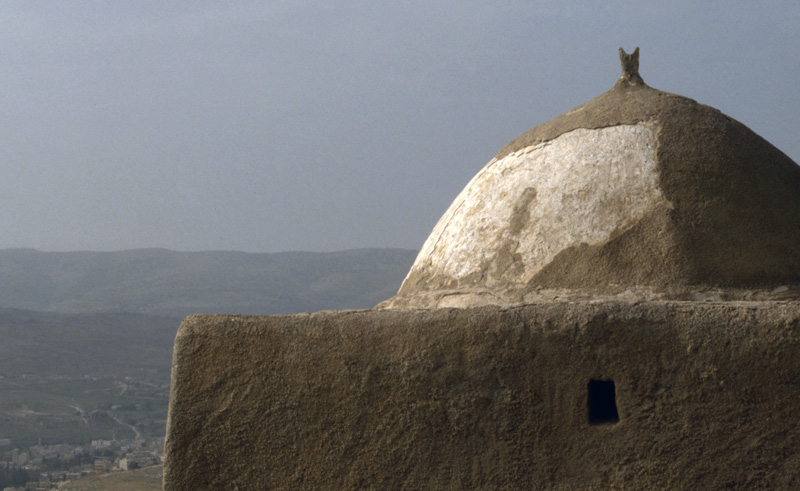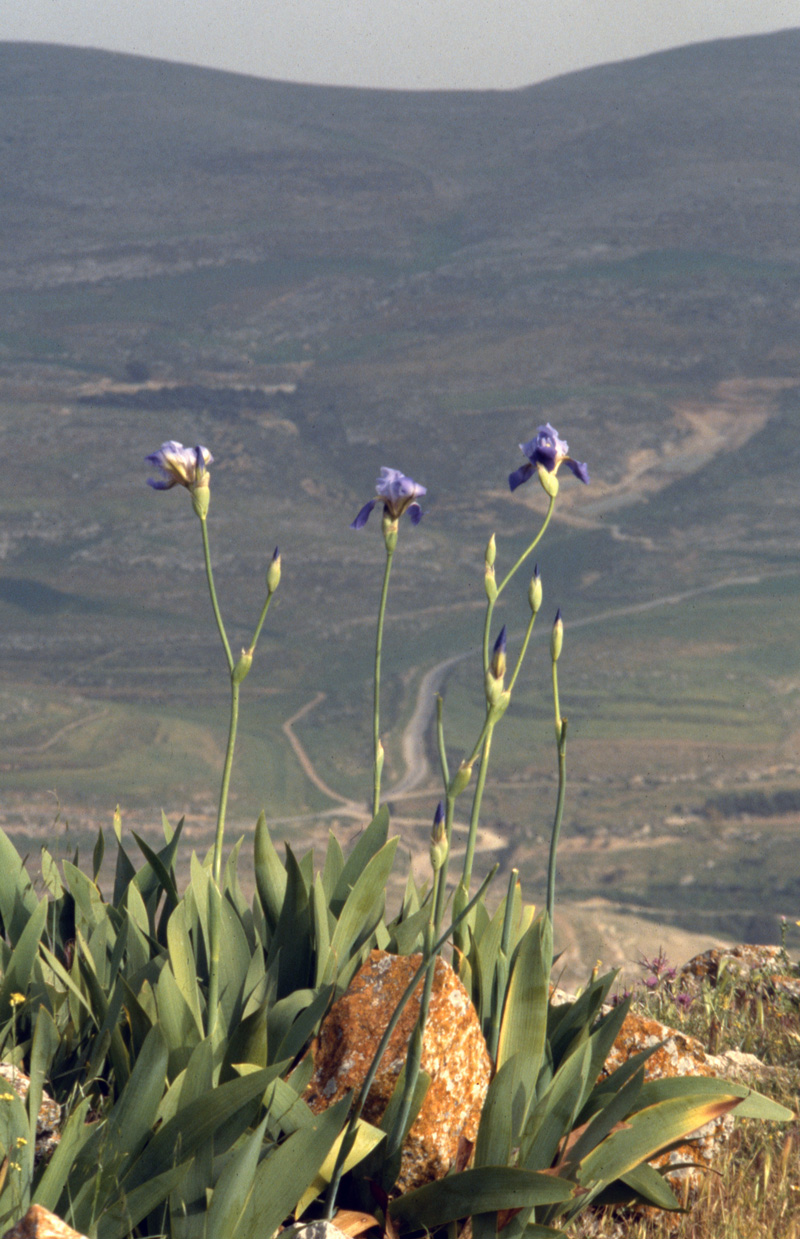Prophet Hud
A tiny road winds up to a small village, and as you gain height the vast landscape around you drops and extends into an infinite circle of horizons with no ends. To the west, you can see the green mountains of Ajloun in the background, Dibbeen in the middle and the shady Jerash valley in the foreground. To the north you see Jerash with its Roman site to the left, and the modern town to the right, and behind that you see the forests of Thaghret Asfoor followed by the plateau of Kufr Khall. To the east you see the hills around Bal'ama and the village of Rihab (or Irhab) with its many Byzantine mosaic floors, and behind them, the far ends of the eastern Badia. To the south, across the Zarka River, you see the oak-dotted hills of Juba, Al Aalouk and Mastaba, and behind them the heights of Jubaiha and Salt to the right.
This is one of the most commanding and powerful spots in central Jordan; the choice of this location to build the shrine of such an important prophet, was not a mere chance.

The small village carries the name of Nabi Hud (pronounced hood), and Hud was the prophet that the Quran’s eleventh sura was named after. Passing the contemporary village, towards the south, the landscape keeps climbing, till, at the highest possible spot, you observe a modest structure with a dome. The traditional village of the early 20th century used to surround this shrine, mostly from its northern side at which an arched entrance is located. Further to the south, the high spot is altered only by a modest graveyard, and, until the mid 1980s, the whole surrounding of the prophet’s domed shrine was carpeted with blooming iris.
In this windy spot, the iris flowers kept bending their stems eastwards, all in synchronized movements following the fluctuating gusts of the breeze, and their petals kept flapping like tiny silver-purple birds, occasionally torn away and taken by the wind whenever it picked up speed. That was, most probably the biggest stretch of this kind of iris (Iris Germanica) in the country.

Prophet Hud was a descendent of Prophet Noah. It is strange to find his shrine here near Jerash, as Hud comes from the tribe of 'Aad who used to live in Arabia in the area between what is now Oman and Yemen. The Arab writer, Ibn Jarir, reported that this prophet was “Hud Ibn Shalikh, Ibn Arfakhshand, Ibn Sam Ibn Nuh (Noah). His tribe, Aad, was said to have consisted of well-built people known for their might, economic success, and for their dwellings of lofty towers.
It is an eerie feeling to realize the close ties between the landscape of Jordan, with its numerous prophet shrines, and that of Yemen and southern Oman. The shoreline around Salalah, in Oman, is dotted with prophet shrines, many carrying the names of relatives to prophets in Jordan. This connection is, at the same time, separated by a geographical distance of thousands of kilometers and by the enormous sand-desert of the Empty Quarter.
Shrines such as this one are like tying points, connecting the Jordanian landscape to locations and stories in remote part of Arabia. They give our land great historical depths, our imagination soothing challenges, and our identity a solid foundation.
We should protect these structures, without subjecting them to brutal renovation or replacing them with modern, often showy structures. The old buildings of such sites hold within them a lot of fragile information, that our grand children can pick-up better if we pass these places to them un-altered. Instead we must concentrate our efforts to protect the environment around such shrines, keeping them away from detrimental “development” and protecting the larger landscape around, with its sensitive and quickly disappearing habitats.
From Jerash ask for directions to Nabi Hud. This destination is good for half a day and easy for children and its paved road makes it accessible by regular cars. The current state of the shrine might not be as picturesque as the photos, which were taken in the mid 1980s.If you have some time, you can drive back to Amman through the charming landscape with oak forests, in the areas of Mastaba and Aalouk, this drive should bring you to Yajouz or Jubaiha to the northwest of Amman. Researching Prophet Hud on the Internet before you go would add a lot of meaning to your trip.